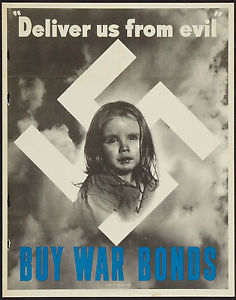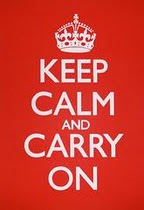This is the final segment in my week-long posts of my day at The Stratford Perth Museum last weekend.
Part One explored my relationship with museums, through
The Four Senses
and then I spoke about the whole reason for visiting the museum in the first place in Part Two,
Shakespeare’s First Folio.
Now here is my final post.
***
T his year marks
his year marks
One Hundred
years since the start of World War I and with the subsequent World War II and the huge influence and shaping they both had on the 20th century.
When I heard about the World War exhibit upstairs I had to make use of the ticket to see as much as I could.
We took an elevator up a floor and back in time, finding ourselves amongst the history, bravery, and heroism of war.
We stepped out through the elevator door to commemorative service medals, to pictures and names…searching for familiar names, as we have had family around the area and, although it was a long time ago, you never know.
There was a history of the area and a write-up on the creation of The Stratford Perth Regiment, beginning with the settlement of settlers in the area in the 1850s.
stratford brass company.
Felt shoe company.
Manufactured goods and services. A furniture company.
Shells and bullet casings. Buttons from some long gone soldier’s uniform.
An example of the sort of food provided. Biscuits were, I can imagine, cheap and easy to produce, but must not have provided much nutrients to soldiers fighting in the trenches. I guess it was better than starting. I simply can not imagine it.
Again, seeing as we were in a museum, most of these things were untouchable for me, for whatever reason. a drum was one of the few things I could reach out and feel. I could imagine the sound of a drum beat, some chant in war.
A piece of trench art from a shell casing, a cross engraving.
What looked like a bit of rock, removed shrapnel from someone fighting in one of these mostly forgotten battles.
A diary and address book from 1916, France and the battle of Vimy Ridge in 1917 – a bayonet and an oil lamp. Some medical badges.
***
Above are some of the items from these wars and below are just a few of the stories:
I enlisted because I wanted to travel. I lied about my age.”
The D-Day Dodgers
we are the D-Day Dodgers
in sunny Italy.
Showed us the sites and gave us tea, Sang us songs. The beer was free.
More on The DDay Dodgers here.
just names,
an ironic take on the italian campaign, a brutal campaign. It was actually considered to be the cowardly mission in comparison to what was going on in France. They did not receive the same recognition as D-Day soldiers in Normandy did.
 A female nurse during World War II:
A female nurse during World War II:
She enlisted. That was her second attempt. She was told the war would be over by Christmas so they did not need more nurses.
She landed in Sicily with the troops,
at the casualty station.
“We went to see MASH and my aunt was upset by the way the docs and nurses in the OR acted.
My mom explained, you had to do that or you would end up losing it.”
(Daughter speaking on behalf of her mother)

The most interesting part of this whole exhibit to me was the part devoted to the subject of propaganda. Being a fan of words I am amazed at how they can uplift and inspire, both in good ways and bad, how words have the power to sway and to mobilize. During times of war the propaganda machine can be used for good and for evil’s means.
The simplest of slogans can have the greatest effect:
DIG FOR VICTORY
To help with the war effort, Britain and Canada grew 1 million tuns of vegetables.
Dig dig dig,
Your muscles will grow big.
Do not mind the spade…
On display there was an extremely controversial text: Mein Kampf (My Struggle).
Adolf Hitler wrote this manifesto while incarcerated in the 1920s and in it he details his vision and his feelings concerning those he deemed to have caused him and his country the problems they were facing at the time of The Depression, post World War I.
– Ten million copies distributed throughout Germany
– This copy Had been handed out to Hitler’s Youth
The Swastika
– The crooked cross, an omni-present symbol
– a symbol present on everything from flags to match boxes, to inspire pride and loyalty in National Socialism.
It’s funny how I don’t have a clear image in my mind of what one of these looks like. I may have seen it. I seem to remember seeing it as a thick dark outline, in the Tom Cruise film Valkyrie, but as my vision has decreased, over time, I am unfamiliar with such a well-known symbol of cruelty and destruction.
However, symbols could be just as vocal for the other side:
– A hammer smashing the swastika.
– british Canadian propaganda posters in circulation
KAPUT!
Give us the tools.
 In thirty-nine and after outbreak of war the british designed posters with bold coloured backgrounds, a symbolic crown of King George the sixth.
In thirty-nine and after outbreak of war the british designed posters with bold coloured backgrounds, a symbolic crown of King George the sixth.
 To add a more modern and a contemporary touch, perhaps hoping to reach younger visitors such as myself, in and amongst the other examples of propaganda and symbolism there was even a movie premier poster from a few years ago. I don’t know which movie in the series it was for, but Rupert Grint was included, in one of the Harry Potter movie promotion posters, wearing a shirt with the infamous wartime slogan: KEEP CALM AND CARRY ON. I suppose he could be playing his role of Ron Weasley. Lord Voldemort was often compared to Adolf Hitler in many ways.
To add a more modern and a contemporary touch, perhaps hoping to reach younger visitors such as myself, in and amongst the other examples of propaganda and symbolism there was even a movie premier poster from a few years ago. I don’t know which movie in the series it was for, but Rupert Grint was included, in one of the Harry Potter movie promotion posters, wearing a shirt with the infamous wartime slogan: KEEP CALM AND CARRY ON. I suppose he could be playing his role of Ron Weasley. Lord Voldemort was often compared to Adolf Hitler in many ways.
I have heard variations of this slogan myself, but this one in particular must be common enough in Britain still today. I find that slogan, in particular, rather interesting. Words even as simple as those are able to influence morale and mood, even in the toughest of times and those words still “carry on” to apply to any of us today.
 This slogan did not have a chance to take off as a slogan for war, remaining on only a few of these posters on the walls of military and recruitment offices. So how did it manage to remain in the peoples’ consciousness for all these years?
This slogan did not have a chance to take off as a slogan for war, remaining on only a few of these posters on the walls of military and recruitment offices. So how did it manage to remain in the peoples’ consciousness for all these years?
Some bookstore owner came across one of these posters mixed in with a dusty old pile of books from an auction.
A true nostalgia item.
 One more variation on this slogan was one spoken to warn soldiers against spilling privileged wartime secret information to any beautiful woman they might come across: KEEP MUM, SHE’S NOT SO DUMB!
One more variation on this slogan was one spoken to warn soldiers against spilling privileged wartime secret information to any beautiful woman they might come across: KEEP MUM, SHE’S NOT SO DUMB!
And those are the words I will leave you with.
🙂
***
I left the museum and was left to ponder the power and potency of words, either written or spoken aloud. I learned a lot over one simple afternoon at a local museum.
Have you ever been to a museum and learned something you hadn’t known before? What effect did it have on you?


 his year marks
his year marks




